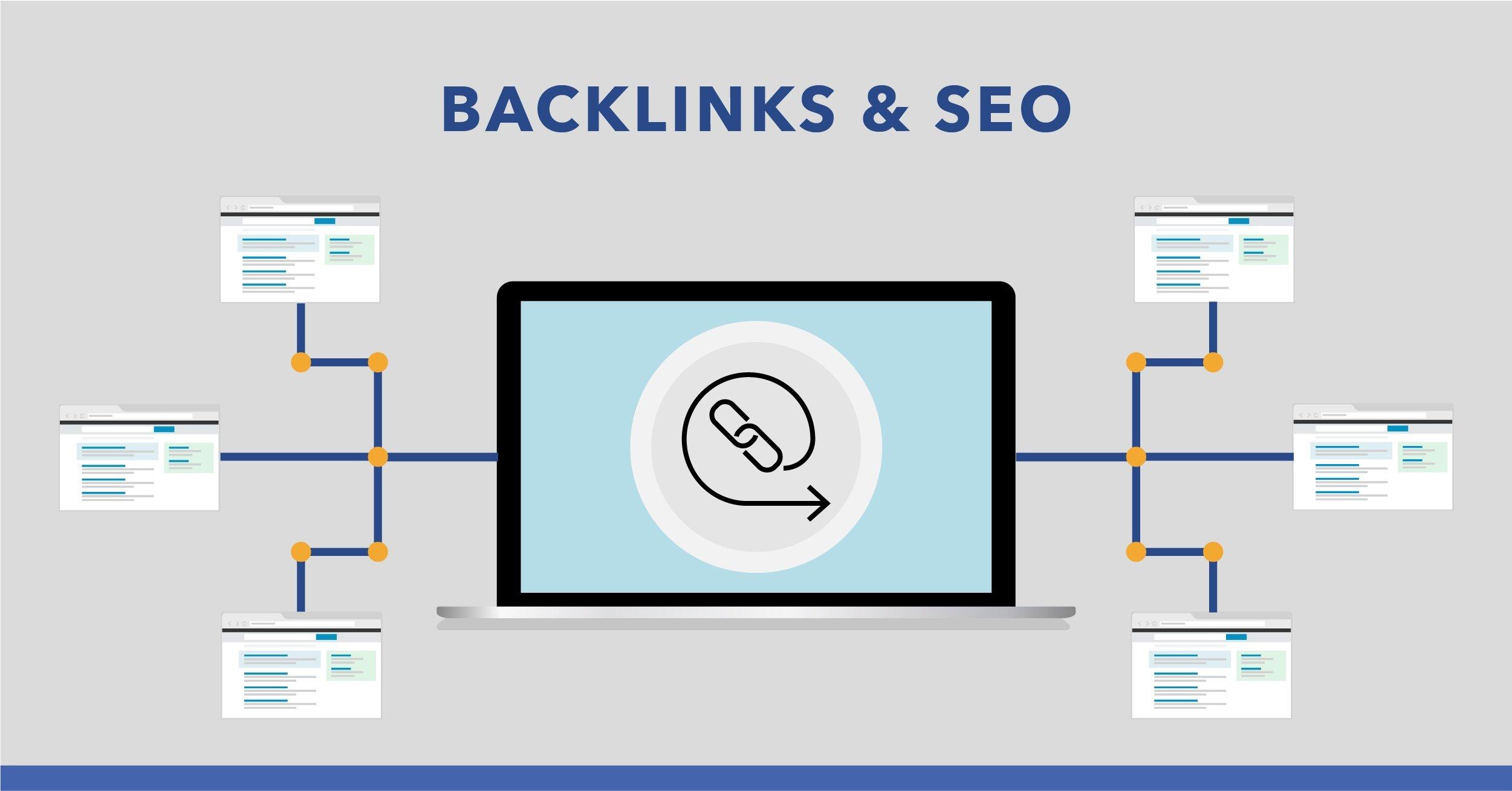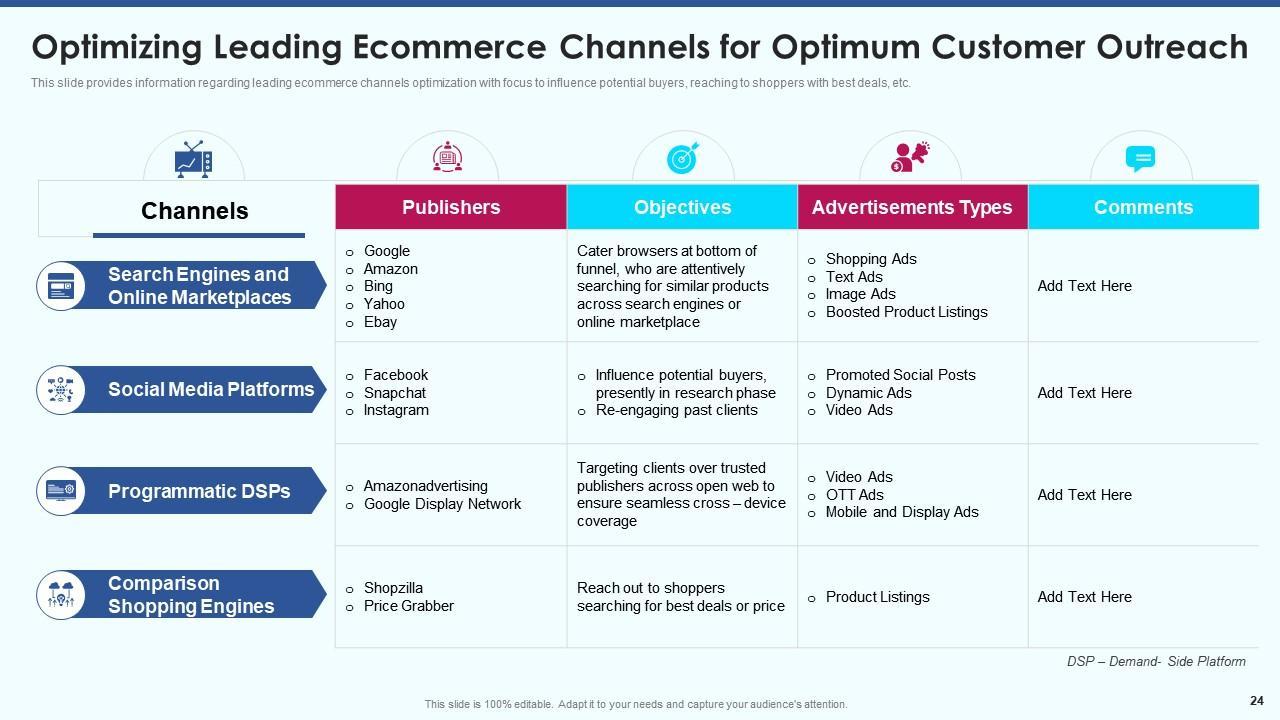Introduction:
Hey there, fellow online entrepreneurs! If you’ve got an eCommerce website that’s not quite pulling its weight, you’re not alone. In the bustling world of online shopping, standing out can feel like an uphill battle. That’s where the magic of SEO comes into play! But wait—before you dive headfirst into the world of keywords and backlinks, there’s a crucial step you need to take: an eCommerce SEO audit. Think of it as a health check for your online store, helping you pinpoint what’s working and what needs a little TLC.
In this guide, we’re going to walk you through essential steps to optimize your site, boost your visibility, and ultimately drive more sales. Whether you’re a seasoned seller or just starting out, these strategies will empower you to attract more customers and turn clicks into conversions. So grab your favorite beverage, get comfy, and let’s unravel the secrets of a successful eCommerce SEO audit together!
Understanding the Importance of an Ecommerce SEO Audit
In the competitive landscape of online retail, an Ecommerce SEO audit serves as a crucial compass guiding your store toward better visibility and increased sales. It’s not just about getting traffic; it’s about attracting the right kind of traffic that converts into loyal customers. Regular audits can help you identify weaknesses and capitalize on strengths, ensuring your store is always at its best.
One of the primary benefits of conducting an SEO audit is the ability to uncover technical issues that may hinder your site’s performance. Issues such as slow loading times, broken links, and improper redirects can frustrate users and lead to high bounce rates. by addressing these factors, you not only improve user experience but also boost your site’s credibility in the eyes of search engines.
Content is king in the world of Ecommerce. An audit helps you evaluate the quality and relevance of your product descriptions, category pages, and blog posts. Are you using targeted keywords effectively? Is your content providing genuine value to prospective buyers? Regularly optimizing your content for search engines increases your chances of ranking higher, which translates to more visibility and potential sales.
Moreover, a comprehensive SEO audit allows you to analyze your competitors. By understanding their strategies, you can identify opportunities to differentiate your store and capture a larger share of the market. This includes monitoring their backlink profiles, social media engagement, and keyword targeting. Knowing what works for your competitors can provide invaluable insights for your own strategy.
Another essential aspect of an Ecommerce SEO audit is assessing your site structure. A well-organized site not only enhances user experience but also makes it easier for search engines to crawl and index your pages. Ensure that your navigation is intuitive, your categories are clearly defined, and your URLs are structured in a way that reflects the hierarchy of details on your site.
| Audit Component | Importance |
|---|---|
| Technical SEO | Identifies and fixes issues that effect site performance |
| Content Quality | Ensures content is relevant, engaging, and optimized for keywords |
| Competitor Analysis | Uncovers strategies and opportunities for differentiation |
| Site Structure | enhances navigation and search engine crawling efficiency |
Ultimately, investing time in an Ecommerce SEO audit is an investment in the future of your online business. With a clear understanding of your current standing and strategic adjustments, you can transform your store into a powerful sales engine. So,roll up your sleeves and get ready to dig deep; the insights gained from an SEO audit can propel your Ecommerce success to new heights.

Identifying Key Elements to Analyze in Your Online Store
When diving into an eCommerce SEO audit, it’s crucial to focus on specific elements that directly impact your online storeS performance. Here are the key areas you should analyze:
- Keyword Optimization: Review your product listings, category pages, and blog content to ensure you’re utilizing keywords effectively. This includes long-tail keywords that match user intent.
- Site Structure: A well-organized site helps both users and search engines navigate easily. Analyze your URL structure, internal linking, and navigation menus to ensure thay facilitate a seamless user experience.
- Page Speed: Fast-loading pages are essential for retaining customers. Use tools like Google PageSpeed insights to check your site’s speed and identify areas for advancement.
- Mobile Responsiveness: With the growing number of mobile shoppers, it’s vital to ensure your online store is fully responsive. Test how your site performs on various devices and screen sizes.
- Content Quality: High-quality content that provides value to your audience can boost engagement and conversions. audit your product descriptions, blog posts, and other content to ensure it’s informative and persuasive.
- Backlink Profile: Analyzing your backlinks can reveal insights into your site’s authority. Use tools like Ahrefs or SEMrush to identify both quality and quantity of backlinks pointing to your store.
| Element | Importance | Tools for Analysis |
|---|---|---|
| Keyword Optimization | High | Google Keyword Planner, Ahrefs |
| Site Structure | Medium | Screaming Frog, Sitebulb |
| Page Speed | High | Google PageSpeed Insights, gtmetrix |
| Mobile Responsiveness | High | Google Mobile-Amiable Test |
| Content Quality | High | Yoast SEO, grammarly |
| Backlink Profile | Medium | Ahrefs, SEMrush |
By systematically examining these elements, you can create a roadmap for optimizing your online store.Each component plays a role in enhancing your visibility, improving user experience, and ultimately driving sales. Make sure to track changes and measure results to understand the impact of your optimizations.

Conducting a Thorough Keyword Research for Ecommerce Success
When it comes to boosting your online store’s visibility, conducting comprehensive keyword research is the cornerstone of effective ecommerce SEO.It’s not merely about finding popular terms; it’s about understanding your audience and tailoring your content to meet their needs. This process begins with identifying a mix of short-tail and long-tail keywords that resonate with your products and services.
Start by brainstorming relevant keywords related to your niche. Think about the terms your potential customers might use when searching for products like yours. To refine your ideas,consider using tools such as:
- Google Keyword Planner – A classic tool for discovering search volume and competition.
- Ahrefs – great for in-depth analysis and tracking keyword performance.
- moz Keyword Explorer – Helps to find new keyword opportunities and assess their potential.
After gathering a list of potential keywords, it’s crucial to analyze them against your competitors. Look into their top-performing keywords and identify gaps that your store can fill. This competitive analysis not only helps in discovering lucrative keywords but also informs your content strategy.You might find that certain niche keywords are less competitive yet highly relevant to your offerings.
Once you’ve compiled a robust list,categorize these keywords into groups based on intent,such as:
| Keyword Intent | Example Keywords |
|---|---|
| Informational | how to use [product],benefits of [product] |
| Navigational | brand name + reviews |
| Transactional | buy [product],[product] discounts |
This segmentation not only helps in crafting targeted content but also assists in optimizing various parts of your online store—from product descriptions to blogs. By addressing the specific needs and questions of your audience, you can substantially enhance engagement and conversion rates.
don’t forget to keep your keyword strategy dynamic. Make it a habit to review and adjust your keywords regularly based on changing trends and consumer behavior. This proactive approach ensures that your ecommerce site remains relevant and continues to attract the right traffic, ultimately leading to ecommerce success.
Evaluating Your Website’s Technical SEO Health
When it comes to optimizing your eCommerce site, ensuring that its technical SEO is in peak condition is critical. Think of it as the foundation of your store—without a solid base, everything else can crumble. To effectively assess your website’s technical SEO health, you’ll want to focus on several key areas.
Site Speed: A slow-loading website can deter potential customers, leading to high bounce rates and lost sales. Utilize tools like Google PageSpeed Insights or GTmetrix to gauge your site’s performance. Aim for a loading time of under 3 seconds to keep your visitors engaged.
Mobile-Friendliness: With more consumers shopping on mobile devices than ever, it’s essential to ensure your website is mobile-friendly. Use Google’s Mobile-Friendly Test tool to evaluate how well your site performs on smartphones and tablets. Responsive design should be your goal, adapting seamlessly to various screen sizes.
Secure Sockets Layer (SSL): Security is paramount in eCommerce. An SSL certificate encrypts data, ensuring that sensitive information remains private during transactions.Check if your URL begins with https://—if it doesn’t, it’s time to invest in an SSL certificate to boost trust and security.
XML Sitemap and Robots.txt: An XML sitemap helps search engines crawl and index your pages effectively. Ensure it’s up to date and correctly reflects your site structure.similarly, your robots.txt file should guide search engines about which pages to crawl or avoid. A simple misconfiguration can lead to critically important visibility issues.
Here’s a speedy checklist to help you evaluate your website’s technical SEO:
- Check site speed and implement optimizations.
- Verify mobile responsiveness across devices.
- ensure SSL is in place for security.
- Regularly update your XML sitemap.
- Review and correct the robots.txt file.
Regular audits will not only keep your website in good standing with search engines but also enhance the user experience, ultimately driving more conversions. make technical SEO a cornerstone of your ongoing optimization strategy, and watch your online store thrive.

Optimizing Product Pages for Maximum Visibility
To truly stand out in the crowded ecommerce landscape, a well-optimized product page is essential. Think of your product pages as the storefront of your online shop. They need to be inviting, informative, and easy to navigate, ensuring that potential buyers have all the information they need to make a purchase decision. Here are some key strategies to enhance visibility and attractiveness:
- Keyword-Rich Titles: Use clear, descriptive titles that incorporate relevant keywords. This not only helps with SEO but also aids customers in finding products quickly.
- Compelling Descriptions: Write unique product descriptions that highlight features, benefits, and potential use cases. Engaging content can capture interest and drive conversions.
- high-Quality Images: Utilize high-resolution images that allow customers to zoom in. Consider multiple angles and lifestyle images to showcase the product in use.
Another critical factor is the user experience (UX). A seamless and enjoyable browsing experience can significantly impact your site’s SEO and conversion rates. Here are a few tips:
- Mobile optimization: Ensure that your product pages are responsive and provide a great experience on mobile devices. A large percentage of shoppers use their phones to browse and purchase products.
- Fast Load Times: Optimize images and reduce unneeded scripts to enhance page speed. Slow-loading pages can deter potential customers.
- Clear Calls to Action: Incorporate prominent buttons like “Add to Cart” or “Buy Now” to guide users towards making a purchase.
Don’t overlook the power of user-generated content on your product pages. Reviews and ratings can significantly influence buying decisions. Consider adding:
- Customer Reviews: Display ratings and reviews prominently. They provide social proof and can alleviate concerns about product quality.
- Q&A Sections: Allow customers to ask questions and engage with your brand. Prompt responses can foster trust and encourage purchases.
A well-structured product page can also enhance your site’s SEO through proper use of headings, alt texts, and schema markup. Here’s a quick overview of essential elements:
| Element | Description |
|---|---|
| Headings (H1, H2, etc.) | Use headings to structure content hierarchically, making it easier for search engines to understand. |
| Alt Text for Images | Descriptive alt text helps with image search visibility and accessibility. |
| Schema Markup | This code helps search engines understand product details like price, availability, and reviews. |
By focusing on these areas, you can create product pages that not only attract organic traffic but also convert visitors into loyal customers. Remember, every element on your page plays a role in the customer’s journey—ensure it’s optimized for both visibility and user experience.

Creating Engaging Content that Converts Visitors
In the world of ecommerce, simply attracting visitors to your online store isn’t enough; you need to convert those visitors into loyal customers. Crafting content that truly engages your audience can make all the difference. Here are some essential strategies to create compelling content that drives conversion.
Know Your Audience
understanding your target market is crucial. Conduct thorough research to identify:
- Demographics: age, gender, and location.
- Interests: What they care about and what influences their purchasing decisions.
- Pain Points: challenges your products can solve for them.
By knowing who you’re talking to, you can tailor your messaging and product offerings more effectively, making your content more relatable and persuasive.
Use High-Quality visuals
Visual content plays a vital role in ecommerce. Shoppers are more likely to engage with posts that include:
- high-resolution product images that showcase details.
- Videos demonstrating product use and benefits.
- Infographics that simplify complex information.
Investing in professional photography and videography not only enhances your brand’s image but also builds trust with potential customers.
Leverage User-Generated Content
Encourage your customers to share their experiences with your products.Displaying user-generated content can significantly boost your credibility. Consider creating:
- Testimonials from satisfied customers.
- Feature sections for customers’ photos using your products.
- A dedicated hashtag for social media that customers can use.
This not only enriches your content but also fosters community and authenticity around your brand.
Craft Compelling Calls to Action
No matter how engaging your content is,it needs clear calls to action (CTAs) to guide your visitors toward the next step. Effective CTAs should be:
- action-oriented: Use verbs like “Shop Now,” “Discover More,” or “Get Yours Today.”
- Visually distinct: Use contrasting colors and larger fonts to make them stand out.
- Placed strategically: Position your CTAs at the end of blog posts, within product descriptions, or as pop-ups at crucial moments.
Optimize for SEO
Integrating SEO best practices into your content is essential for driving organic traffic. Ensure your content includes:
- Relevant keywords that align with your audience’s search intent.
- Descriptive alt text for images to improve visibility.
- Internal and external links to enhance credibility and promote exploration.
This approach not only helps in ranking higher in search results but also ensures that your content reaches the right audience.
Example of Effective Content Layout
| Content Element | Purpose | Best Practices |
|---|---|---|
| High-quality Images | Capture attention and build trust | Use multiple angles and lifestyle images |
| User Reviews | Enhance credibility and social proof | Showcase authentic customer experiences |
| Informative Blog Posts | Educate customers and establish authority | Focus on solving problems or answering questions |
Enhancing User Experience to Boost SEO Performance
Enhancing the user experience on your ecommerce site is more than just a trend; it’s a vital component in improving your SEO performance.When visitors engage with your site positively, they are more likely to stay longer, explore more products, and ultimately convert into paying customers. Here are some key areas to focus on:
- Site Speed: A slow-loading website can frustrate users and lead to high bounce rates. Optimize images and leverage browser caching to ensure your pages load swiftly.
- Mobile Responsiveness: With a growing number of shoppers using mobile devices, it’s crucial that your site is mobile-friendly. Test your site’s usability on various screen sizes and make necessary adjustments.
- Easy Navigation: A clear menu structure and intuitive navigation help users find what they are looking for without hassle. Use descriptive labels and consider implementing breadcrumbs for easier tracking.
Moreover, incorporating high-quality visuals and engaging content can significantly enhance user experience. Product images should be vibrant and clear,while descriptions should provide essential information but also engage the reader. Consider the following:
- High-Quality Images: Use multiple angles and zoom features to give customers a better view of the product.
- Compelling Product Descriptions: Write unique descriptions that highlight the benefits and features, addressing potential customer concerns.
- User-Generated Content: Encourage reviews and testimonials, as these can build trust and influence purchase decisions.
Another aspect to consider is the importance of a secure shopping surroundings.Ensure your site is equipped with the latest security measures, including SSL certificates.This not only protects user data but also fosters trust, encouraging users to complete their purchases.
don’t overlook the meaning of a seamless checkout process.A convoluted checkout can lead to abandoned carts. Streamline the experience by:
| Checkout Optimization Tactics |
|---|
| Offer guest checkout options |
| Provide multiple payment methods |
| Display progress indicators |
| Allow easy editing of cart items |
By focusing on these critical areas, you not only enhance user satisfaction but also create an environment that search engines favor. An optimized user experience can lead to improved rankings, increased traffic, and ultimately, higher sales for your online store.

Leveraging Backlinks to Strengthen Your Online authority
In the ever-evolving landscape of eCommerce, backlinks serve as powerful endorsements for your online store. They function like votes of confidence from other websites, signaling to search engines that your content is credible and valuable. This is especially crucial for eCommerce websites, where competition is fierce and visibility can make all the difference between browsing and buying.
To effectively leverage backlinks, consider the following strategies:
- Guest Blogging: Collaborate with influential blogs in your niche. By contributing high-quality content, you can include links back to your store, driving traffic and enhancing your authority.
- Influencer Partnerships: Team up with influencers who resonate with your target audience. Their endorsement can lead to organic backlinks,boosting your credibility.
- Content Creation: develop shareable content such as infographics, how-to guides, or product comparisons. Unique and valuable content is more likely to be linked by others.
Additionally, it’s important to conduct a backlink audit to assess your current standing. Tools like Ahrefs or Moz can help you identify:
| Backlink Type | Quality Indicators | Action Steps |
|---|---|---|
| High Authority Sites | Domain Authority (DA) > 50 | Maintain and strengthen these relationships. |
| Low-Quality Links | DA < 20 | Consider disavowing or removing these links. |
| Broken Links | 404 Errors | Reach out to site owners for replacements. |
ensure that your backlinks are not just quantity-driven but also quality-focused. A few links from authoritative sites will yield better results than numerous links from lower-quality sources. Focus on relevance and the context in which your links appear; this enhances the likelihood of driving targeted traffic to your store.
By strategically building and managing your backlink profile, you’re not just improving your search rankings but also establishing your eCommerce site as a trusted resource in your industry. Remember, in the world of SEO, authority is everything, and backlinks are your best allies in achieving it.

Monitoring Your Analytics for Continuous Improvement
To truly harness the power of your online store, it’s crucial to keep a close eye on your analytics. By monitoring key metrics, you can make informed decisions that lead to continuous improvement and ultimately drive more sales. Here are some essential aspects to focus on:
- Traffic Sources: Identify where your visitors are coming from. Are they arriving via organic search, social media, or paid ads? Understanding this will help you allocate resources effectively.
- Conversion Rates: Track how well your site converts visitors into customers. If you notice low conversion rates, it might be time to tweak your product pages or checkout process.
- Bounce Rate: A high bounce rate may indicate that your landing pages aren’t engaging enough. analyze these pages to see what improvements can be made.
- user Behavior: Utilize tools such as heatmaps and session recordings to see how users interact with your site. This insight can highlight areas that need optimization.
Consider setting up regular reporting intervals. Weekly or monthly reviews can provide you with a comprehensive view of your performance over time. A simple table can definitely help you visualize changes in key metrics:
| Metric | Week 1 | Week 2 | Week 3 | Week 4 |
|---|---|---|---|---|
| Traffic | 1,200 | 1,500 | 1,800 | 2,000 |
| Conversion Rate | 2.5% | 2.7% | 3.0% | 3.2% |
| Bounce Rate | 45% | 40% | 38% | 35% |
Furthermore, don’t hesitate to adjust your strategies based on what the data reveals. If a particular campaign isn’t yielding the expected results, pivot quickly rather than waiting for it to improve naturally. Always be proactive in your approach.
Lastly, remember that analytics isn’t just about gathering data; it’s about interpreting it effectively. Make sure you understand the context behind your numbers. For instance, a spike in traffic may not be as valuable if it doesn’t translate into sales. Dive deeper, ask questions, and use your findings to refine your SEO strategies continuously.

Staying Updated with SEO Best Practices and Trends
Staying ahead in the competitive world of eCommerce requires a keen understanding of SEO best practices and emerging trends. As search engines evolve, so do the strategies that ensure your online store remains visible and attractive to potential customers. Regularly updating your SEO knowledge can definitely help you adapt to algorithm changes and consumer behavior shifts.
One of the most effective ways to stay informed is by following reputable SEO blogs and forums. Here are some resources to consider:
- Moz blog: Offers in-depth articles and guides on SEO fundamentals and advanced tactics.
- Search Engine Journal: Covers the latest news and trends in the SEO landscape, including algorithm updates.
- Neil Patel’s Blog: Provides practical tips and actionable strategies for eCommerce SEO.
- Google Search Central: The official resource for learning directly from the source about search engine guidelines.
In addition to following blogs, attending industry conferences and webinars can significantly enhance your understanding of SEO. Engaging with experts and peers allows for sharing insights and discussing challenges. Look out for events like:
- SMX (Search Marketing Expo): Focuses on search marketing strategies.
- Pubcon: Offers a blend of SEO,social media,and web analytics sessions.
- BrightonSEO: Known for its practical advice and networking opportunities.
Lastly, consider implementing a regular SEO audit schedule for your eCommerce store. This proactive approach ensures you’re always aligned with the latest trends and practices. Here’s a simple table to outline essential audit steps:
| Audit Step | Description |
|---|---|
| Keyword Research | Identify high-traffic keywords relevant to your products. |
| Technical SEO | Check site speed, mobile-friendliness, and indexing issues. |
| On-Page SEO | optimize product titles, descriptions, and images. |
| Content Audit | Evaluate existing content for relevance and engagement. |
| Backlink analysis | Assess the quality and quantity of backlinks pointing to your site. |
By staying updated on SEO trends and consistently auditing your online store, you position your business to thrive in an ever-changing digital landscape. Embrace the learning curve, and let your eCommerce store shine with optimized visibility and traffic!

Implementing a regular SEO Audit Schedule for Long-Term Success
Establishing a regular SEO audit schedule is crucial for maintaining and enhancing your online store’s visibility. By prioritizing this practice, you not only safeguard your current rankings but also adapt to the ever-evolving digital landscape. Here are some essential elements to consider when implementing your audit schedule:
- Frequency: Determine how often you need to conduct audits. Monthly audits might suit smaller stores, while larger ecommerce platforms may benefit from a quarterly approach.
- Key Metrics: Focus on specific metrics that matter most to your business, such as organic traffic, bounce rates, and conversion rates. Monitoring these indicators will provide insight into your site’s performance.
- Tools and Resources: Utilize a mix of free and premium tools to streamline your audit process. Popular choices include Google Analytics, SEMrush, and Ahrefs. These platforms can help you analyze data effectively.
As you plan your audits, consider creating a checklist to ensure you cover all critical areas. This could include:
- Technical SEO elements, such as site speed and mobile responsiveness
- On-page SEO factors, including keyword optimization and meta tags
- Content quality and relevance, evaluating product descriptions and blog posts
- Backlink profile analysis to identify healthy links versus toxic ones
To provide a clearer view of your progress, maintain a log of your findings and updates. This table example highlights potential changes to track:
| Audit Date | Key Findings | Actions Taken | Future Recommendations |
|---|---|---|---|
| 01/2023 | High bounce rate on product pages | Updated images and descriptions | monitor user engagement |
| 03/2023 | Slow loading times | Optimized images and scripts | Test after new product launches |
| 06/2023 | Low keyword rankings | Revised SEO strategy | Expand content marketing efforts |
don’t forget to involve your team in the audit process. Collaboration fosters a sense of ownership and can lead to innovative ideas for improvement. Regularly sharing audit results can motivate everyone to stay focused on the overarching goals of enhancing your ecommerce site’s performance.

Final Thoughts on Elevating Your Ecommerce Strategy
In the ever-evolving landscape of ecommerce, staying ahead of the competition requires a keen understanding of SEO fundamentals. Optimizing your online store isn’t just about tweaking a few keywords; it’s about creating a holistic strategy that resonates with your audience and search engines alike. By conducting a thorough SEO audit, you can identify gaps, capitalize on strengths, and make informed decisions that drive traffic and conversions.
One of the key takeaways from any SEO audit is the importance of user experience. A well-structured website that is easy to navigate not only helps retain visitors but also boosts your search rankings. Consider the following elements:
- Fast Loading Times: Ensure your site loads quickly to minimize bounce rates.
- Mobile Optimization: With a growing number of users shopping on mobile devices, a responsive design is essential.
- Clear Navigation: Help users find what they’re looking for with intuitive menus and search functions.
another critical aspect is the content strategy. Quality content that addresses the needs and interests of your target audience can significantly enhance your visibility on search engine results pages (SERPs). focus on:
- Keyword Research: Identify keywords that are relevant to your products and incorporate them naturally into your content.
- Engaging Product Descriptions: Write compelling descriptions that not only inform but also persuade customers to buy.
- Regularly Updated Blog: Share valuable insights and tips that position your brand as an industry leader.
As you refine your SEO strategy, remember that analytics play a vital role in measuring success. Regularly review your traffic sources, conversion rates, and customer behavior patterns. Implementing tools such as Google Analytics can provide insights that guide your next steps. Here’s a simple overview of key performance indicators (KPIs) to monitor:
| Metric | Description |
|---|---|
| Organic Traffic | Number of visitors coming from search engines. |
| Bounce Rate | Percentage of visitors who leave after viewing only one page. |
| Conversion Rate | Percentage of visitors who complete a desired action (e.g., purchase). |
Lastly, don’t underestimate the power of backlinks. Building a solid link profile can dramatically improve your site’s authority and ranking. Focus on establishing relationships with industry influencers and guest posting on reputable sites to earn quality backlinks. A thoughtful outreach strategy can open doors to new audiences and enhance your brand credibility.
By prioritizing these essential components, you can significantly elevate your ecommerce strategy. A comprehensive SEO audit is not just a one-time task; it’s an ongoing process that requires regular attention and adaptation to keep your online store thriving in a competitive market.
Frequently Asked Questions (FAQ)
Q&A: Ecommerce SEO Audit Guide – Essential Steps for Online Store Optimization
Q: What is an Ecommerce SEO audit, and why is it important?
A: Great question! An Ecommerce SEO audit is a comprehensive evaluation of your online store’s current SEO performance. It’s important because it helps identify strengths, weaknesses, and opportunities to improve your website’s visibility in search engines. By optimizing your site, you can attract more traffic, increase conversions, and ultimately boost sales. Think of it as a health check for your online business!
Q: What are the key components of an Ecommerce SEO audit?
A: An effective Ecommerce SEO audit covers several key areas:
- Technical SEO: this includes website speed, mobile-friendliness, and crawlability.
- On-page SEO: Here, you’ll look at product descriptions, title tags, and meta descriptions.
- Content Quality: Assess the uniqueness and relevance of your product content.
- backlink Profile: Evaluate the number and quality of backlinks pointing to your site.
- User experience: This involves site navigation, layout, and overall user engagement.
Q: How often should I conduct an SEO audit for my online store?
A: Ideally, you should conduct a comprehensive SEO audit at least once a year. Though, if you make significant changes to your site, like launching new products or redesigning your website, it’s wise to perform an audit instantly after. Regular checks will help you stay ahead of competitors and adapt to changing algorithms.
Q: What tools do I need to perform an Ecommerce SEO audit?
A: You’re in luck! There are various powerful tools available that make the audit process smoother. Some popular ones include:
- Google Analytics: For tracking traffic and user behavior.
- Google Search Console: To monitor site performance and identify issues.
- SEMrush or Ahrefs: For backlink analysis and keyword research.
- PageSpeed Insights: To assess your site speed and performance.
Q: Can I perform an Ecommerce SEO audit myself, or should I hire a professional?
A: It depends on your comfort level with SEO! If you have a decent understanding of SEO principles, you can absolutely conduct your own audit using the right tools and resources. Though, if you’re pressed for time or need more advanced insights, hiring an SEO expert can be a smart investment. They can provide a nuanced view and help implement improvements effectively.
Q: What are some common mistakes to avoid during an Ecommerce SEO audit?
A: Here are a few pitfalls to watch out for:
- Ignoring mobile optimization: With so many users shopping on mobile devices, this is critical!
- Neglecting site speed: Slow-loading pages can drive potential customers away.
- Ignoring user experience: If your site is hard to navigate, customers will leave before they make a purchase.
- Forgetting about product descriptions: Unique and informative product descriptions are essential for SEO.
Q: What results can I expect after conducting an Ecommerce SEO audit?
A: While results can vary, many online store owners see improved rankings on search engines, increased organic traffic, and higher conversion rates after implementing the audit recommendations. Think of it as a roadmap to better visibility and sales in the crowded ecommerce landscape!
Q: Ready to get started on my Ecommerce SEO audit? Any final tips?
A: Absolutely! Start by gathering all the data you need and make a checklist of the components to review.Don’t rush through it; take your time to analyze everything thoroughly. And most importantly, stay committed to continual improvement.SEO is an ongoing process, and small incremental changes can lead to significant long-term benefits. Happy auditing!
Insights and Conclusions
Conclusion: Elevate Your Ecommerce Game with SEO Audits
As we wrap up this comprehensive guide on Ecommerce SEO audits, it’s clear that optimizing your online store is not just a one-time task; it’s an ongoing commitment to excellence. By taking the time to dive deep into your website’s performance, you’re not just improving your search engine rankings but also enhancing the overall shopping experience for your customers.
Remember, a well-executed SEO audit can illuminate areas for improvement, boost your visibility, and ultimately drive more sales. So, don’t wait any longer — start implementing these essential steps today! whether you’re a seasoned pro or a newbie in the ecommerce world, investing in your SEO strategy can set you apart from the competition.Take action, stay informed, and watch your online store thrive. Your customers are searching for what you offer; it’s time to ensure they can find you. Happy optimizing!

